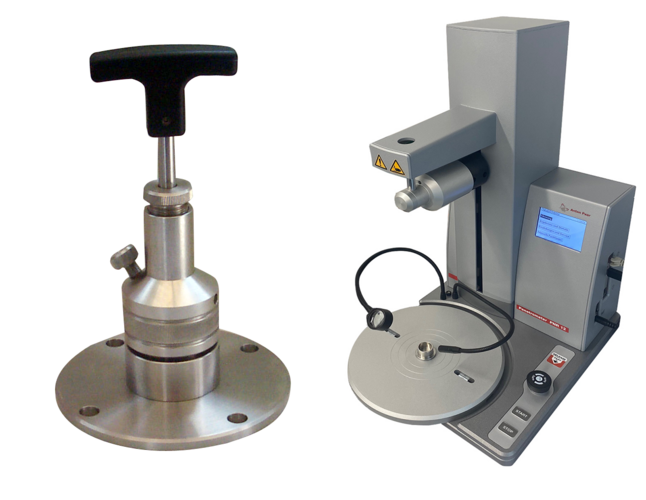
| OELCHECK test instrument: | Petrotest PNR 12 |
| Sample quantity: | quarter cone: 30 g – recommended for NLGI class 0-4 full cone: 1.500 g – recommended for NLGI class 000-6 |
| Unit: | 0.1 mm |
| Test result: | penetration value determining the consistency class of a lubricating grease |
| Analysis for: | lubricating greases |
| Brief description: | A standardised cone penetrates a set quantity of grease. The penetration depth reached in 5 seconds, measured in 0.1 mm, indicates the penetration value. If the grease is very soft, the cone penetrates deeply and the penetration value is high. If the grease is harder, the cone penetrates less deeply and the penetration depth is lower. For working penetration, the sample is additionally worked with 60 double strokes before measurement. The purpose is to mechanically stress the fresh grease and thus make the consistency of the unused grease more comparable to that of the grease in use. |
| Statement: | The consistency of a grease impacts its hardness (plasticity). The consistency classification spans the NLGI classes 000 (very soft, almost fluid) to 6 (solid). NLGI stands for National Lubricating Grease Institute, an American institution whose work focuses on technical requirements for greases. |
| Underlying test standard: | DIN ISO 2137, ASTM D1403, ASTM D217 (full cone) |